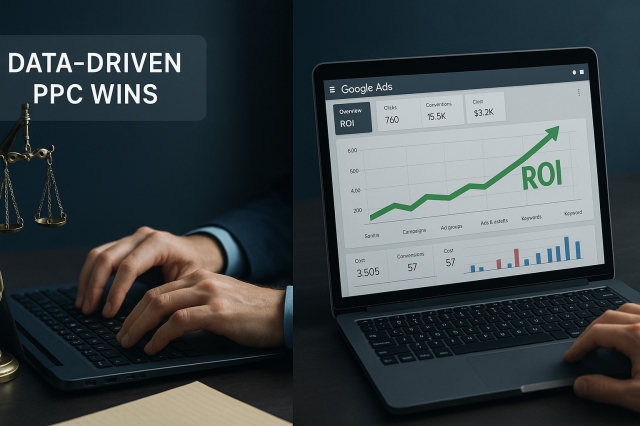Nearly every potential client starts with a search. In fact, 96 percent of people who need legal help open Google first.
That habit is both a blessing and a budget killer. One click can net a seven-figure case, yet personal-injury keywords often cost $70–$250 each—enough to torch a month's ad spend before lunch.
The upside? With a data-driven plan, even a modest budget can turn paid clicks into signed retainers. In this guide, we'll unpack five proven tactics, spotlight the metrics that matter, flag common money-pits, and point you to vetted agencies (plus a free Google Ads audit) so you can stay focused on practicing law.
Ready to turn pricey clicks into profitable cases?
The 2025 legal PPC landscape: costs & opportunities
Pay-per-click advertising for lawyers is in a league of its own. Personal-injury keywords often start at $70 and climb past $250 per click. After you factor in typical conversion rates, signing one case can cost about $2,500. According to the National Law Review, that math comes from a recent breakdown of legal ad costs.
Yet attorneys keep bidding, because one seven-figure verdict or a steady stream of $10,000 estate plans makes the spend look small. High stakes create a high-pressure arena where sloppy campaigns burn cash while data-driven ones mint it.
The board is shifting. Google Local Services Ads now sit above standard search ads with a green “Google Screened” checkmark that broadcasts trust. That placement pushes organic results lower and makes paid visibility even more valuable.
At the same time, Google's automated bidding tools get smarter each quarter, crunching signals no human can process. Firms that still tweak bids manually risk paying more for lower spots while algorithm-led competitors improve in real time.
In short, costs are steep, competition is fierce, and the rules keep changing. Every strategic edge you claim turns directly into stronger cases and healthier margins. The next five tactics show where to find those edges.
Top 5 PPC Agencies for Lawyers in 2025
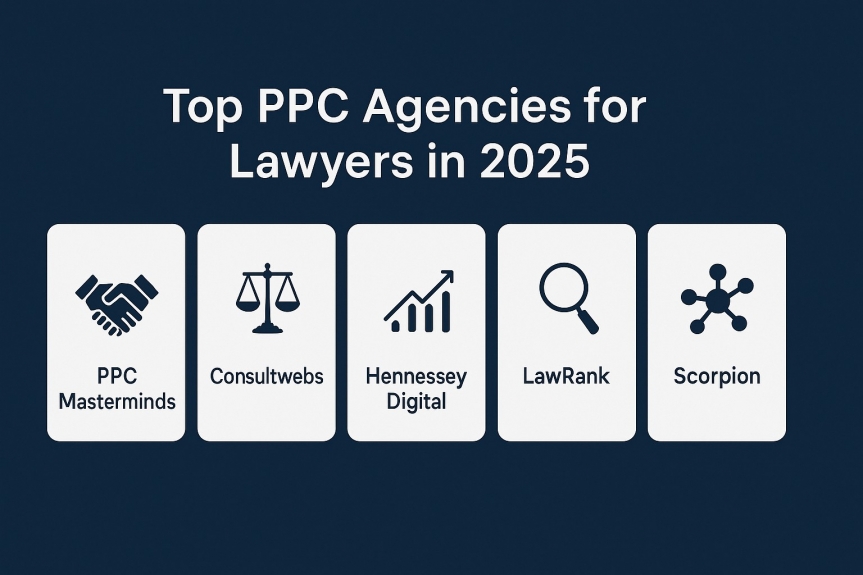
You can master every tactic in this guide, yet still decide your time is better spent in court than in dashboards. If that sounds like you, lean on specialists. Below are five agencies—ranked only alphabetically after our client mentioned—that live and breathe legal PPC. Each blends data, creative, and tireless optimization to turn ad spend into signed retainers.
PPC Masterminds
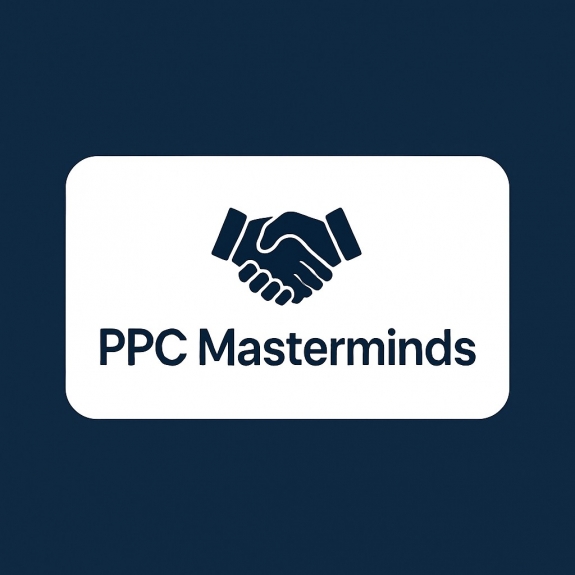
PPC Masterminds is a boutique PPC agency that works exclusively with law firms. Clients talk directly with senior strategists, not account juniors, and every engagement begins with a free Google Ads audit. If you crave white-glove service and transparent reporting, this is the first call to make.
Consultwebs
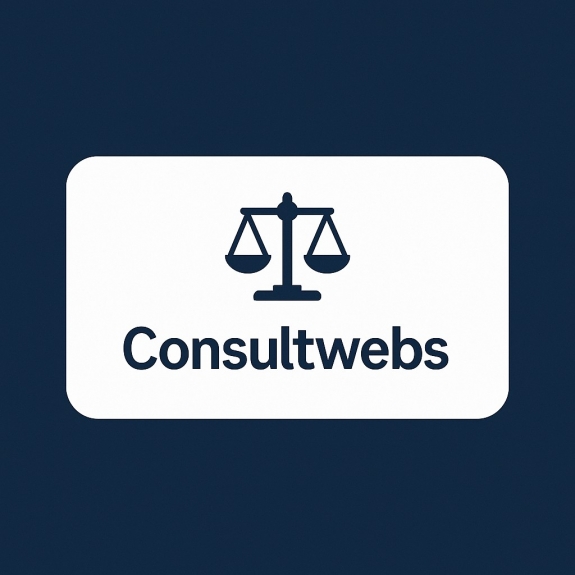
Twenty-plus years in the legal space gives Consultwebs a deep bench of intake and marketing talent. They tie campaigns to signed-case revenue, not vanity metrics, and limit the number of firms they serve in each market to avoid conflicts.
Hennessey Digital

Known for scaling high-budget personal-injury campaigns, Hennessey pairs PPC with SEO insight to dominate competitive metros. Their analysts obsess over cost-per-case and are comfortable spending big when the math pencils out.
LawRank
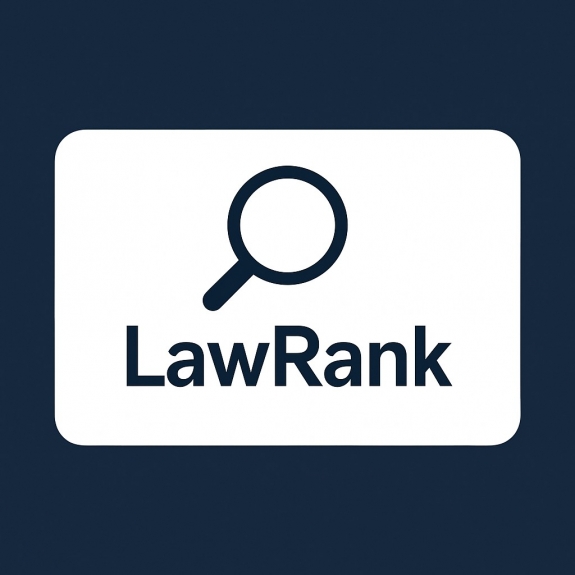
Started as an SEO powerhouse, now equally sharp in paid search. Having attorneys on staff means ad copy and landing pages resonate with both algorithms and juries. A solid fit for firms that want integrated search strategies.
Scorpion
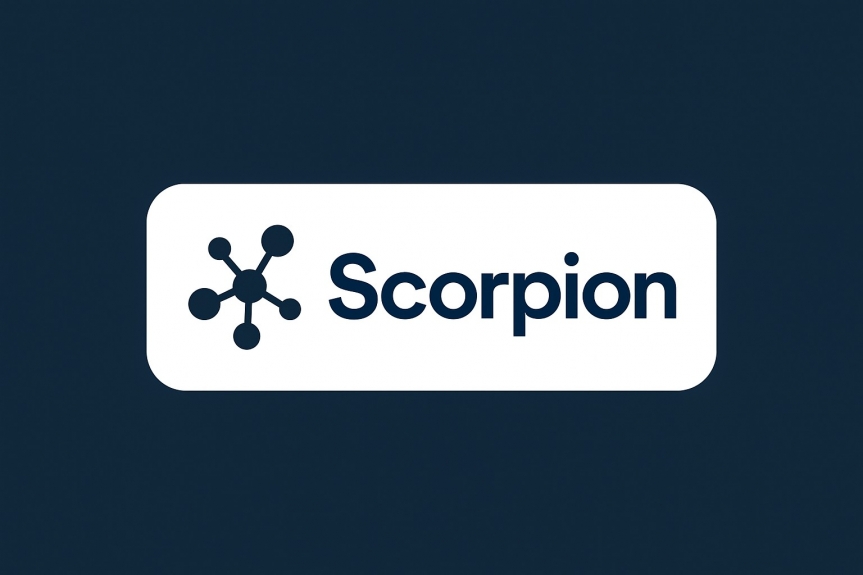
Scorpion’s proprietary tech platform crunches data from thousands of campaigns, giving them benchmarking power few can match. Ideal for multi-office firms that need scale, consistency, and wraparound services from chat to video.
Do your diligence—request case studies, confirm who will manage your account day to day, and align on cost-per-case targets before signing. The right partner will feel less like a vendor and more like a revenue engine bolted onto your practice.
Tactic 1: target high-intent keywords and ruthlessly negate time-wasters
Why intent beats volume
Clicks alone never paid a retainer. We want searchers who wake up ready to hire, not students Googling “how to become a lawyer.”
High-intent phrases carry that signal. Think “truck accident lawyer Dallas” or “estate lawyer for high net worth.” They earn fewer searches than a broad term like “lawyer,” yet they arrive packed with purchase intent and face lighter bidding pressure. That mix drives higher conversion rates at a lower effective cost.
When we align bids with intent, every dollar becomes a sharper spear. Instead of spraying a budget across the internet, we focus on where serious cases hide. The result? Fewer leads, a higher percentage of signed matters, and far less time wasted on calls that go nowhere.
Next, we’ll map out a fast way to build that money-keyword list.
Build a profit-first keyword list
Start where the money starts: your own data. Open the Search Terms report in Google Ads and filter for queries that produced calls, form fills, or booked consults. Those phrases are gold. Copy them into a working sheet and tag each with the practice area, location, and the signed-case value you captured. Patterns will pop.
Layer in fresh ideas with Keyword Planner. Enter your highest-value practice plus the city you serve. Google will surface dozens of cousins: “18-wheeler accident lawyer Dallas,” “semi-truck injury attorney Dallas,” “best truck crash lawyer near me.” Volume looks tiny next to “injury lawyer,” but these long tails convert at two, three, even five times the rate. Smaller ponds, hungrier fish—and agencies that specialize in PPC for law firms, like PPC Masterminds, often build strategies around exactly these high-intent terms.
Once the list takes shape, match type matters. Lock the real winners as exact or phrase matches to keep Google from drifting into irrelevant territory. If you test a broad match to discover new gems, watch it closely and be ready to add negatives fast.
Finally, price each keyword against expected revenue. If a term attracts six-figure trucking cases, paying $80 per click is still a bargain. If it leads to fender-bender tire-kickers, dial bids back or pause it. Money talks, metrics whisper.
Slash waste with a living negative keyword list
Every campaign leaks money somewhere. Our job is to plug the holes fast.
Open the same Search Terms report you mined for winners and flip the script. Sort by spend, then scan for phrases that triggered clicks yet never turned into consults. “Free legal advice,” “cheap lawyer,” and “legal aid” are classic culprits. Add them as negatives the moment you spot them.
Think beyond relevance and screen for profit. If your firm doesn’t offer pro bono work, block “pro bono.” If you refuse low-impact fender-benders, exclude “minor accident.” The goal is a living blacklist that grows each week.
Broad match speeds discovery but also widens the blast radius. Pair it with sturdy negatives and you’ll collect new, high-intent phrases while dodging wallet-draining distractions. Over time, that trim work can cut wasted spend by 30 percent or more, cash you can redirect to terms that put files on your desk.
Tactic 2: embrace Local Services Ads and call-focused campaigns
Win the trust game with Google Screened LSAs
Local Services Ads sit above every other result on the page. They show a green Google Screened checkmark, your firm’s star rating, and a tap-to-call icon. In one glance, prospects see proof of licensing, background checks, and real reviews before they read a word of ad copy.
That trust signal converts. Recent data show personal-injury firms pay about $140–$340 per LSA lead, with the average around $240, a fraction of what many spend to land the same case through standard search ads.
LSAs charge per lead, not per click, so a tire-kicker who taps but never calls costs nothing. When the phone does ring, it’s almost always a live prospect ready to talk details, not a casual browser.
Getting approved takes paperwork, including license verification, background checks, and a stream of five-star reviews, but once that green badge appears, you leapfrog every traditional ad on the screen. In competitive metros, that can be the difference between fielding urgent calls all morning and watching rivals scoop them up.
Next, we’ll fine-tune those calls with scheduling, geo-targeting, and classic call-only ads.
Turn calls into cases with smart scheduling and geo targeting
Phone leads feel urgent because they are. A prospect who dials your firm is juggling pain, anxiety, and a shortlist of attorneys. Answer within five rings and you control the conversation. Miss the call and a competitor picks it up.
Run call-only ads during staffed hours so every ring reaches a person. If you use an answering service after hours, set a second ad schedule that starts at 5pm with adjusted messaging, such as “Talk to our 24/7 intake team.” That simple tweak preserves the trust LSAs earned.
Tighten the map next. Use radius or ZIP-code targeting to reach only the neighborhoods that consistently deliver high-value matters. You’ll pay the same per lead, but revenue rises because the cases tend to be larger and closer to your office.
Finally, add call extensions to your regular text ads. Mobile users see a tap-to-call button before they even reach your landing page, trimming one step from the funnel. Combine those extensions with location bid adjustments and you’ll win more qualified calls without raising spend.
These scheduling and geo moves sound small, yet they add up fast. We’ve seen firms lift call conversion rates by 30 percent in a single quarter simply by answering the phone faster and narrowing their target map. Small levers, big cases.
Tactic 3: harness smart bidding and automation
Let algorithms do the heavy lifting with Target CPA
Manual bidding made sense when Google Ads was simpler. In 2025 it feels like flying a jumbo jet with a joystick: possible, but wildly inefficient.
Switch to Target CPA and hand the throttle to Google’s machine learning. You set the maximum you’ll pay for a signed consult, say $150 for a bankruptcy lead, and the system adjusts bids in real time to hit that goal. It weighs device, location, search intent, and past browsing behavior, a data stew no analyst can digest on the fly.
Firms that shift from manual to Target CPA often see more conversions at the same spend within weeks. The machine hunts pockets of under-priced traffic you never knew existed while throttling bids on terms that rarely close. Your average cost per qualified lead drops, and budget flows to the keywords that fill your calendar.
You still steer the plane. Review performance weekly. If actual CPA holds below target for two straight weeks, lower the goal and let the algorithm chase the new number. If it drifts above, check conversion tracking first; bad data, not bad bidding, is usually the culprit.
Automation isn’t a magic button. It’s a power tool. Use it well and you trim waste while scaling the tactics that win the biggest cases.
Supercharge ad copy with Responsive Search Ads
Static text ads show the same message to every searcher. Responsive Search Ads work like a perpetual split test. Load up to fifteen headlines and four descriptions, and Google assembles thousands of combinations. Over time, the algorithm learns which mix earns the best click-through and conversion rates for each query, device, and location.
Feed the machine variety. Include at least eight headlines: some packed with target keywords for relevance, others spotlighting value props like “No Fee Unless We Win” or “Hundreds of 5-Star Reviews.” Pair those with two or three punchy descriptions that promise speed, such as “Get a free case review in ten minutes.”
Watch the Ad Strength meter, but don’t chase a perfect score at the expense of clarity. Prospects care about benefits, not buzzwords. Review asset-level reporting monthly, pause headlines that underperform, and add fresh angles to keep the learning loop alive. The result is a living ad that sharpens itself while you focus on practicing law.
Automate the mundane, guard the metrics
- Pause any keyword after it spends $200 without a conversion.
- Raise bids 10 percent on terms delivering leads below your target CPA.
These guardrails run nightly, enforcing discipline even when no one is watching the dashboard.
Add email alerts for budget spikes, disapproved ads, or sudden drops in call volume. Instead of discovering trouble in a monthly report, you fix it the same day.
All of this hinges on clean data. Confirm that every form submission, call, and chat logs as a conversion in both Google Ads and GA4. If numbers look off, troubleshoot tracking first. Flawed data breeds flawed automation, and nothing burns money faster than an algorithm chasing phantom leads.
With rules policing the trenches and accurate metrics lighting the path, you keep strategy at thirty thousand feet while machines sweat the small stuff.
Tactic 4: track every conversion and calculate real ROI
Capture the moment a prospect raises a hand
Clicks are vanity; conversions pay the bills. Before we crunch ROI, we need airtight tracking on every action a visitor can take.
Start with the basics. In Google Ads, turn on call reporting and replace your site phone number with a Google forwarding line. Each dial from an ad or landing page now appears as a conversion, complete with call length. Next, tag every form in Google Tag Manager and pipe those events into GA4. A two-minute “Free Case Evaluation” submission counts the same as a phone call: one step closer to a signed retainer.
Test everything. Fill out the form yourself, call the forwarding number from a mobile phone, start a chat if you offer one. Confirm the conversion fires in Ads and mirrors in Analytics. Until the data lines up, nothing else in your dashboard can be trusted.
With those plumbing fixes in place, we know exactly which keyword spawned which call, and that clarity powers the profit math next.
Follow the money from lead to signed case
A conversion isn’t a client until someone signs an agreement. Track that final step in a spreadsheet or, better yet, your CRM.
Log each PPC lead. Mark whether they scheduled, showed, retained, and note the projected fee. After a month, filter the sheet. Patterns pop fast. Maybe “truck accident lawyer Dallas” sends 10 leads, 3 bookings, and 2 high-six-figure cases. Meanwhile, “car wreck attorney near me” burns $500 for one no-show consult.
Now divide ad spend by actual revenue. Spend $5,000 and bank $50,000 in new cases, and you’ve earned a 10:1 return—proof that disciplined legal marketing budgeting can amplify every dollar. Spend the same and bring in $5,000, and you’re treading water.
Make decisions by that math. Scale keywords delivering signed cases under $200. Pause any that exceed your profit threshold. The numbers never lie, and neither should our budget.
With ROI crystal clear, we turn to the place where many campaigns silently die: your landing pages and intake process.
Tactic 5: optimize your landing pages and intake
Match ad to page so every click lands on custom content
A searcher who taps “24/7 DUI lawyer Phoenix” expects to land on a page that states, “We handle DUI cases around the clock in Phoenix,” not a generic homepage. When message and page align, conversion rates rise. When they clash, visitors bounce in seconds.
Create dedicated pages for every high-value practice and location you bid on. Use the headline to echo the keyword verbatim, “Truck Accident Lawyer in Dallas,” so visitors feel instant relevance. Follow with three quick points: why choose you, proof you win, and the next step. That structure answers who, why, and how before the scroll wheel even moves.
Keep paragraphs tight, images professional, and forms painless. Ask for name, contact, and one sentence about the issue. The shorter the form, the higher the completion rate. Qualify leads during the follow-up call.
Add a click-to-call button top and center. Half your traffic arrives on mobile. If visitors need to pinch-zoom to dial, they’ll back-arrow to the next lawyer instead.
Treat intake like a sales team, speed closes deals
A polished landing page earns the inquiry; a disciplined intake process turns it into revenue. Respond within five minutes of every form submission or missed call. After ten minutes, the prospect’s anxiety spikes and they phone the next firm.
Route new leads to one intake specialist, not a rotating cast. Give that person a script focused on empathy first and logistics second: “Are you safe? Let’s get you help,” beats “What is your case number?”
Record and score calls for tone, accuracy, and follow-up. Coach the team weekly. Even seasoned staff miss cues, such as pauses that signal doubt or chances to schedule an in-person consult. Small shifts in phrasing raise retention rates and, by extension, the value of every advertising dollar.
Conclusion
The PPC battlefield for lawyers in 2025 is unforgiving—but it’s also one of the fastest ways to secure high-value cases. With clicks costing as much as $250, guessing isn’t an option. The firms that thrive are those that treat paid search like an investment portfolio: tracking every dollar, measuring real ROI, and reallocating budget to the assets that deliver.
Frequently Asked Questions (FAQ)
- Why is PPC for lawyers so expensive?
Because high-value cases make firms willing to bid $70–$250 per click. - What’s the difference between Google Search Ads and Local Services Ads (LSAs)?
Search Ads charge per click, while LSAs charge per lead and often convert better. - How can I prevent wasting budget on unqualified clicks?
Use a strong negative keyword list and review Search Terms reports weekly. - Is automation really better than manual bidding?
Yes—smart bidding adjusts in real time to lower costs and boost conversions. - What’s the most important metric to track?
Signed cases, not just clicks or leads. - How quickly should my firm respond to leads?
Within five minutes for the best chance of conversion. - Should I hire an agency or manage PPC in-house?
Hire an agency if you want expertise and scale; in-house works only with strong data skills.
